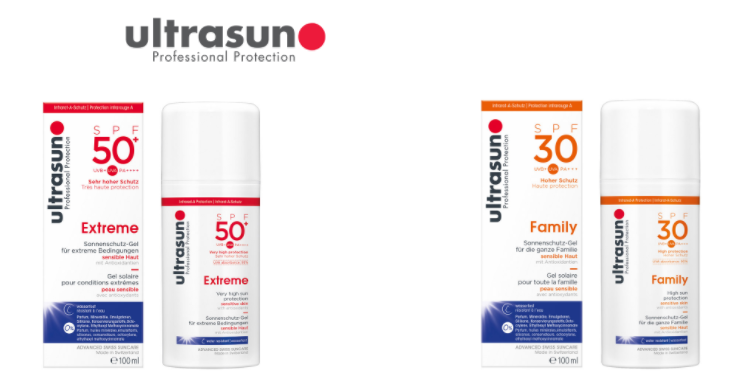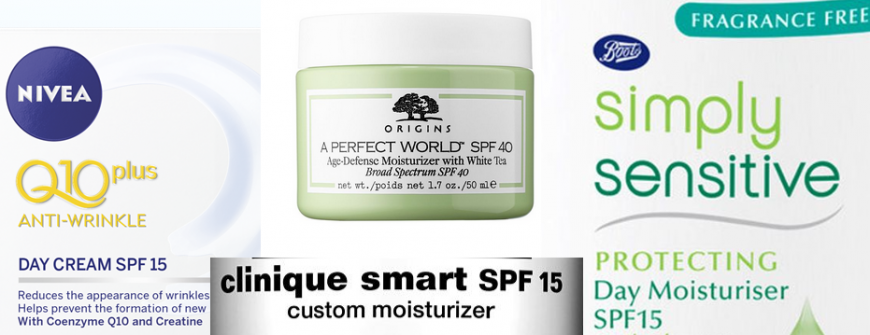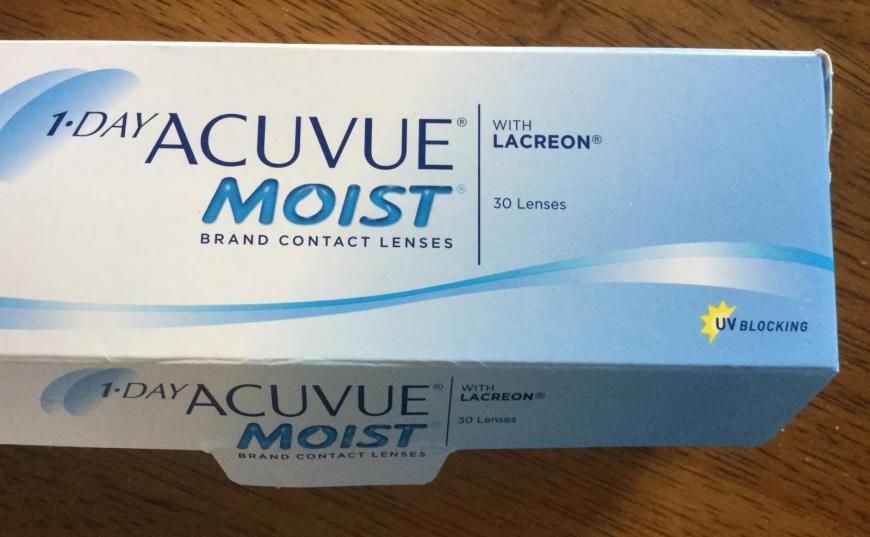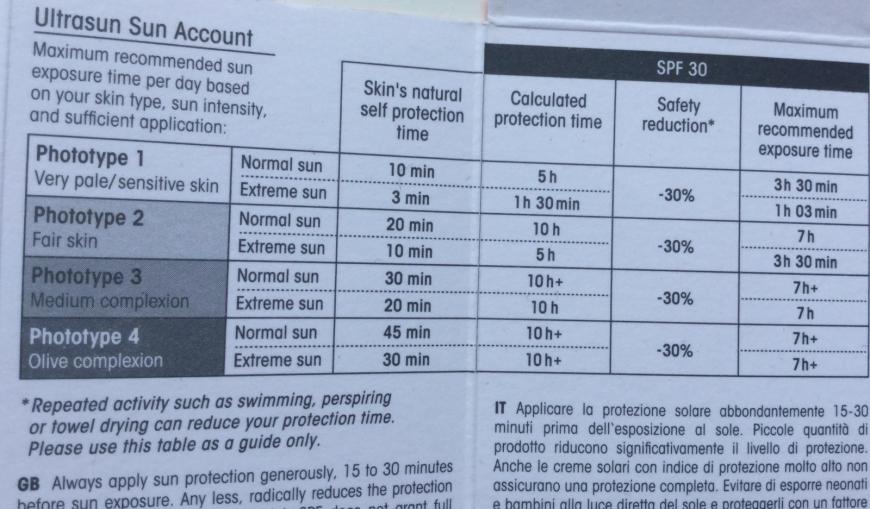
I said to someone yesterday I was writing this article and had put my sunscreen on. They replied, "it's not that hot and it's cloudy, why bother?"
Well, it's not about how hot it is, or sunny, it's about UV levels. We should wear sunscreen a lot more than we do in the UK but as the temperatures climb more people will be outside and exposing more skin. So time to get the sun protection right.
When the weather forecast shows signs of the air warming up or even a lengthy dry, sunny, hot week, many people are pleased. Especially if it’s over a weekend, bank holiday or just after a long winter. Just to be able to get outside, know that spring or summer has arrived. Not have to put all those clothes on, coat, hat, wellies, do stuff in the lighter evenings. However, not everyone is so keen on the warmth even if the sunshine is cheery. We all need to take care in the sun. Enjoying the warmth is fine but just a bit of UV preparation.
Putting your sunscreen on before you go out and take it with you. Taking a hat and sunglasses. What about the SPF in your moisturiser will that do, fake tan, vitamin D, if only sitting in the shade or it’s cloudy today, why bother?
Sunscreens; you are screening out some of the sun’s harmful rays. If you don’t bother, your skin will be damaged, will age and there is the risk of skin cancer. Higher temperatures this week, especially in SE Britain. People will be exposing their skin, after a long winter as UV levels rise here in the UK.

Rays UV, Ultraviolet radiation is emitted by the sun. UVC rays are halted by the ozone layer, luckily as they would be dangerous to us. Ultrasun advise that you can think of UVA as A for ageing and UVB for burning. UV rays penetrate 90% of light cloud cover, so even though people think more about slapping on the sun cream in late spring or summer, actually you could put it on all year. It doesn’t matter if the air is warm or cool, it is about the strength of the sun’s rays.
As you will know in spring, the actual air can be quite chilly, especially if you are in the shade or exposed to the wind. However, in shelter and sunshine, you can feel really warm and outer layers come off. People who do water sports know that the sun’s rays reflects off the water, but the same is true for snow, hence the ski panda eyes tan, sand and even concrete.
What type of sunscreen? SPF means Sun Protection Factor. At least SPF 15 is needed for UVB protection and a high star rating of at least 4 stars (UVA) on a 5-star scale. Factor 30 or above is recommended by Ultrasun and factor 50 for children as they have more sensitive skin.
Ideally, it should protect from infra-red rays as well. These go deeper into the skin than UV and cause extra ageing. The beauty industry has latched onto this recently with added antioxidants now advertised helping to defend the skin.
Fragrance is drying for the skin, so that is not an important part of a sunscreen. Sun creams do have a shelf life, usually from 6 months to 2 years, they will say on them. It is a good idea to write on the bottle or tub when you open it. Don’t allow them to get hot, it affects the liquid
How and when to apply. No sunscreen will work if it hasn’t been applied properly, how often have you just missed a bit and all your good intentions go down the drain as you suffer a sore back of the neck or shoulder. Most need to be put on before you go out in the sun, onto clean, dry skin. Not on skin that is already beginning to burn, too late.
As a guide for an adult, this means around two teaspoonfuls of sunscreen if you're just covering your head, arms and neck. 1 teaspoon per leg, apply it liberally. Around 2 and a half tablespoonfuls if you're covering your entire body, say if you are going swimming. Equivalent to at least a golf ball sized amount of cream.
If you go swimming, have a paddle in the sea, or perspire from sports, then reapply afterwards. Crossing your legs can rub off sun cream. Your hair parting, get a bit of cream on that, or cover up with a hat or bandana and remember your eye area where skin is very thin and sensitive. For your hands, take your watch or ring off before you apply, so you don’t miss a bit and remember your toes.
But I want a tan! Okay, you want a tan, but you need to protect your skin, not damage it, so just take it slowly. This has been a problem with people going on shorter package holidays once a year. They would often expose their skin to the sun all week, relentlessly to get a tan, and skip decent coverage (or even any sun cream, I knew someone who put olive oil on their skin) so that they were guaranteed to return home with a holiday tan. You can still tan with sunscreen, but it will be more gradual and safer.

Makeup What about my SPF moisturiser? Many moisturisers now contain SPF15, but it is diluted within the thin layer that you put on first thing in the morning, and probably don’t reapply. Put sunscreen on first, wait and then moisturise. It’s always tricky getting cream around your eyes well, an amount the size of a grain of rice will do for both eyes. Any damage by the sun to your face probably won’t show until you are about 40 so don’t assume all is well because you can’t see anything right now. Spraying perfume on your skin and then putting sunscreen on isn’t ideal as it can affect the effectiveness of the cream, leading to the mottled look sometimes seen on ladies’ décolletage.
And fake tan? Fake tan is not sun protection. You have essentially coloured in your legs but not added anything which will block out UVA or UVB. Put your sun cream on. If you do get a spray tan before you go on holiday, it can ease the “I must get a tan quick” thoughts when you arrive which would be a good thing.
Shade and clouds. UV rays can go through some fabrics, leaves in trees and reflect off the ground so it’s still important to think about clothing and sunscreen. The UV also reaches through the clouds; how many times have people said, “I caught the sun yesterday and it wasn’t even sunny”. If you fall asleep under a well-poised parasol, the sun will have moved by the time you wake up. Good quality sunglasses with CE Mark and British Standard that say UV400 and 100% UV protection label are needed. Wrap-around ones are great. UV light can increase the risk of cataracts. Some contact lenses have UV blocking as protection to the cornea and into the eye but obviously, don’t protect the sensitive skin around your eyes.

I need my Vitamin D Yes, Vitamin D is important, and the sun is one source of this, as it oily fish, some yoghurts and cereals. Vitamin D keeps your bones healthy, a deficiency can cause rickets in children and osteomalacia in adults. Sufficient sunshine is estimated to be a short time per day in summer with arms, legs and face exposed without sunscreen, so 10 to 15 minutes. However, this must be balanced against exposing the body to skin cancer risk. In Scotland, the sun isn’t high enough in the sky for about six to seven months of the year, so it isn’t strong enough to produce Vit. D in the skin. The Scottish government recommend that people take supplements because it is that much of an issue, particularly in the winter months.

Sunburn, ageing and worse.
Too much ultraviolet (UV) radiation from the sun or sunbeds is the main cause of skin cancer. In the UK, almost 9 in 10 cases of melanoma, the most serious type of skin cancer, could be prevented from enjoying the sun safely and avoiding using sunbeds.
Sunburn doesn’t have to be raw, peeling or blistering. If your skin has gone pink or red in the sun, it’s sunburnt. For people with darker skin, it may just feel irritated, tender or itchy. Cancer research
Of course, different skin types respond in varying ways. The UV levels change with location and altitude, time of day, time of year.
The most common area for men to develop skin cancer problems is on their chest and back, also for golfers on (bald/thinning) heads or around the nose. A pair of golf gloves, not just one, will protect the backs of the hands which are usually the first to display sun damage. Each day you can put sunscreen on your face and the backs of your hands, as they are all exposed to the sun. For drivers, especially lorry drivers, the ears are quite vulnerable usually on the right-hand side, by the window. For women, malignant melanoma is more likely on their arms and legs.
Most of the UV rays occur between 11am and 3pm in the UK summer. So, stay out of the midday sun, head for shade. Apply your sunscreen well, each day, and reapply. Cover up heads and necks and wear decent sunglasses, then enjoy the sunshine and warmth. You can check the UV forecast daily on the UK weather map.
Loading recent activity...